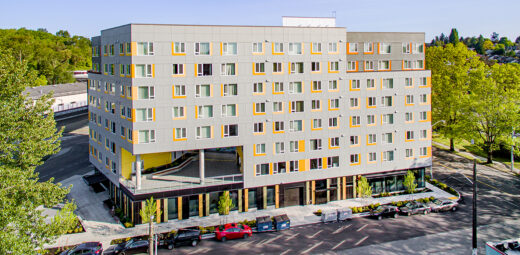
Feb 164% is 100% Better
On December 27, Congress passed $900 billion in COVID-19 pandemic relief and $1.4 trillion in government funding through 2021. This included a big win for the low-income housing tax credit (LIHTC).
What’s LIHTC?
It’s the lifeblood of affordable housing — pronounced ‘lie-tech.’ Created in 1986 by the Reagan Administration, LIHTC is a vital funding source that raises private equity for affordable housing through federal tax credits going toward the rehabilitation and construction of below-market-rate housing for low-income tenants. So, it’s a tax incentive for for-profit companies that want to make positive social impact. LIHTC funding is painfully competitive, and compliance is held to the highest standard. Deadlines are strict! Usually, you can only apply for LIHTC funding twice a year too, but each state is different.
How does this affect communities?
LIHTC, relief bill, 4%… it sounds like a lot, but what it boils down to is that affordable housing developers (like Mercy Housing and other SAHF members) have better access to more predictable funding. This bipartisan bill created a permanent minimum 4% LIHTC rate for housing bonds that are issued beginning in 2021. For years, affordable housing advocates had been pushing for a fixed rate like this because they wanted more predictability. The short of it: before the 4% minimum, funding affordable housing was more difficult, there was more scarcity — meaning it was harder for those interested in developing affordable housing to create stable homes for people earning low incomes. This means more homes for people in need are on the way, but it takes time.

The need
Even before the pandemic, the country’s affordable housing supply was desperately lacking. The National Low Income Housing Coalition (NLIHC) estimates that the U.S. has a shortage of seven million affordable rental homes for people with extremely low incomes. Not one state has an adequate supply of affordable housing either.
Now, thanks to this 4% minimum tax credit, more families, veterans, seniors, and people with special needs will have a place to call home. An estimated 130,000 affordable homes could get built between 2021-2030, according to Novogradac & Co. That means more than just more homes, that means brighter futures and more access to opportunity. Mercy Housing is excited about this news, but the work is just beginning. It takes partnerships, teamwork, and compassion to get more stable affordable housing for the millions of people in need. Together, we can do it!
No related posts.
Stay Up To Date
Get news on Mercy Housing and inspiring stories of change delivered to your inbox.


